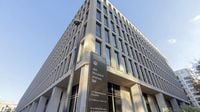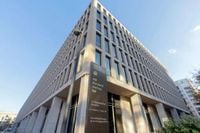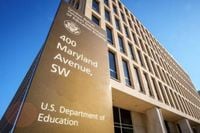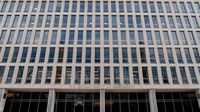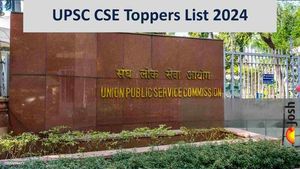The U.S. Department of Education announced on Monday, April 21, 2025, that it will resume collections on student loans that are in default starting May 5, 2025. This decision ends a five-year pause on involuntary collections that began during the COVID-19 pandemic, which has affected millions of borrowers across the country.
Currently, approximately 5.3 million borrowers are in default on their federal student loans, with another 4 million borrowers who are 91 to 180 days late on their payments. This situation has raised concerns about the financial health of these individuals and the overall economic implications as the federal student loan portfolio nears a critical point.
Education Secretary Linda McMahon emphasized the need for the Department of Education to act, stating, "American taxpayers will no longer be forced to serve as collateral for irresponsible student loan policies." She criticized the previous administration under President Joe Biden for its attempts to cancel student loan debt, asserting that the executive branch does not possess the constitutional authority to simply erase debt.
Under the new policy, collections will be executed through the Treasury Department's offset program, which allows the government to withhold payments such as tax refunds and Social Security benefits from those in default. Additionally, after a 30-day notice period, the Department will begin garnishing wages for borrowers who have not made payments for over nine months.
The decision to restart collections has drawn sharp criticism from advocates for student loan borrowers. Mike Pierce, executive director of the Student Borrower Protection Center, described the move as "cruel and unnecessary," arguing that it will exacerbate economic struggles for working families already facing challenges.
The pause on student loan payments began in March 2020 under President Trump, as part of the efforts to alleviate financial burdens during the pandemic. This moratorium was subsequently extended multiple times by the Biden administration, culminating in a final grace period that ended in October 2024. During this time, borrowers were not required to make payments, leading to significant confusion about repayment expectations.
As collections resume, the Education Department plans to notify borrowers in default via email over the next two weeks. These communications will urge borrowers to either make a payment or enroll in a repayment plan. The Department is also preparing to launch a robust outreach campaign to engage all borrowers on the importance of repayment.
In the wake of the resumption of collections, the Education Department has noted that only 38% of borrowers are currently in repayment and up to date on their loans. This alarming statistic highlights the challenges many borrowers face in navigating the complexities of repayment plans and the lack of clarity surrounding their obligations.
Advocates are particularly concerned about the potential impact on older borrowers, many of whom are on fixed incomes and may struggle to make payments. A report from the Consumer Financial Protection Bureau indicated that nearly 40% of federal borrowers over the age of 65 were already in default on their student loans.
Furthermore, the Department of Education has faced criticism for the lack of clarity regarding income-driven repayment plans, which tie monthly payments to a borrower's income. In February 2025, applications for these plans were temporarily taken offline, only to be reinstated a month later. This back-and-forth has left many borrowers confused and unsure of their options.
In light of these developments, Betsy Mayotte, president of The Institute for Student Loan Advisors, emphasized the importance of loan rehabilitation programs as a means for borrowers to avoid wage garnishment. She explained that borrowers must contact their loan servicer to initiate rehabilitation, which typically requires proof of income and expenses to determine an affordable payment amount.
Despite the challenges ahead, the Education Department has committed to helping borrowers return to repayment. McMahon stated that the Department will work in conjunction with the Treasury Department to manage the student loan program responsibly and according to the law, focusing on both the financial health of borrowers and the nation's economic outlook.
As the Department prepares to resume collections, the potential for almost 10 million borrowers to be in default looms large, which could lead to nearly 25% of the federal student loan portfolio being classified as such. This situation raises significant concerns about the implications for borrowers and taxpayers alike.
The Education Department's decision to restart collections on student loans marks a pivotal moment in the ongoing saga of student debt in the United States. As millions prepare to face the consequences of default, the urgency for reform and clarity in student loan policies has never been greater. Advocates continue to call for more comprehensive solutions that prioritize the needs of borrowers and promote equitable access to education financing.
